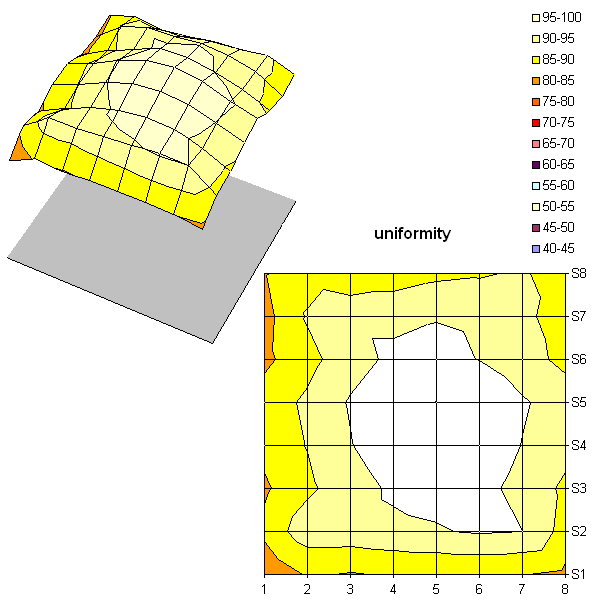The DoubleSight DS1700 Gives Your PC Double Vision
Spatial Uniformity
We measured the uniformity of the panel's lighting, using the standard THG method. For those of you who aren't familiar with it, here's a recap. We set the panel at 50% brightness and 50% contrast and measure the uniformity of the lighting on a white image separated into 64 areas of equal size. The brightest point is considered to be 100%, and the previously measured black value is considered 0%, with the other values obtained distributed between them.
Here, the spatial uniformity is within the average range encountered across LCD tested by THG. Not bad, but not better than others.
The overall static performance of the DS1700 is okay and suits the needs of certain applications well, especially if you work in bright conditions. But still I miss the 5000 K preset here.
Now let's take a look at the matter of moving pictures.
Reasonably Fast
The DS1700 performs well in our standard latency test, but it's clearly not outstanding.
Again we'll recall our test method: the curve shows the different latency values for various levels of gray. A black-white alternation is shown on the curve by a point at X-axis 255, a black-light-gray alternation produces a point at X-axis 125, black-dark-gray shows as 50, etc.
The official ISO latency rating specified by the manufacturer is only for black/white transitions (0/255). While the value we measured agrees with the manufacturer on this point, it's not of much value in judging the actual responsiveness of the panel in practice.
Get Tom's Hardware's best news and in-depth reviews, straight to your inbox.
As you can see from the curve, this is not the best monitor we have ever had here at THG, but it performs relatively well. Even if the performances are not state-of-the-art for a 17" LCD, they are as good as a consumer 19" 12 ms panel as far as latency is concerned.

